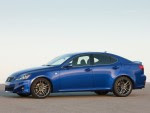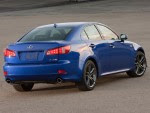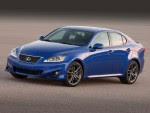Tuesday, December 21, 2010
Saturday, December 4, 2010
2011 Holden VE Commodore SS V Redline Wallpapaers
 2011 Holden VE Commodore SS V Redline Wallpapaers #1
2011 Holden VE Commodore SS V Redline Wallpapaers #1 2011 Holden VE Commodore SS V Redline Wallpapaers #2
2011 Holden VE Commodore SS V Redline Wallpapaers #2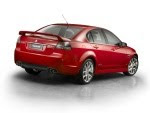 2011 Holden VE Commodore SS V Redline Wallpapaers #3
2011 Holden VE Commodore SS V Redline Wallpapaers #3 2011 Holden VE Commodore SS V Redline Wallpapaers #4
2011 Holden VE Commodore SS V Redline Wallpapaers #4 2011 Holden VE Commodore SS V Redline Wallpapaers #5
2011 Holden VE Commodore SS V Redline Wallpapaers #5 2011 Holden VE Commodore SS V Redline Wallpapaers #6
2011 Holden VE Commodore SS V Redline Wallpapaers #6 2011 Holden VE Commodore SS V Redline Wallpapaers #7
2011 Holden VE Commodore SS V Redline Wallpapaers #7 2011 Holden VE Commodore SS V Redline Wallpapaers #8
2011 Holden VE Commodore SS V Redline Wallpapaers #8 2011 Holden VE Commodore SS V Redline Wallpapaers #9
2011 Holden VE Commodore SS V Redline Wallpapaers #92011 Holden Barina Spark CDX Pictures
 2011 Holden Barina Spark CDX Pictures #1
2011 Holden Barina Spark CDX Pictures #1 2011 Holden Barina Spark CDX Pictures #2
2011 Holden Barina Spark CDX Pictures #2 2011 Holden Barina Spark CDX Pictures #3
2011 Holden Barina Spark CDX Pictures #3 2011 Holden Barina Spark CDX Pictures #4
2011 Holden Barina Spark CDX Pictures #4 2011 Holden Barina Spark CDX Pictures #5
2011 Holden Barina Spark CDX Pictures #5 2011 Holden Barina Spark CDX Pictures #6
2011 Holden Barina Spark CDX Pictures #6 2011 Holden Barina Spark CDX Pictures #7
2011 Holden Barina Spark CDX Pictures #7 2011 Holden Barina Spark CDX Pictures #8
2011 Holden Barina Spark CDX Pictures #8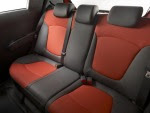 2011 Holden Barina Spark CDX Pictures #9
2011 Holden Barina Spark CDX Pictures #9Friday, November 5, 2010
Toyota Brings a NASCAR-Inspired V-8 Camry to SEMA
We’re not sure how many times—if ever—we’ve used the words “Camry” and “fun” in the same sentence. While Toyota proudly rumbled into SEMA with the car you see here, the shocking and awesome RK Collection Toyota Camry NASCAR Edition, we know that number is bound to stay low. Like most SEMA creations, it is a no-expense-spared one-off, this one dreamt up by a NASCAR team co-owner (with help from TRD). There’s pretty much no chance of it ever being reproduced even once, let alone in mass quantities.
But why dwell on that? At least there’s one, and this Camry looks like stupid fun. (See? We did it.) With a roll cage, a Tremec six-speed manual, and a 358-cubic-inch V-8 pumping out 680 horsepower at 8500 rpm, this is one Camry that no Impala SS or Fusion should make eye contact with on the street. And they’ll hear and see it coming, thanks to its three-inch exhaust plumbing as well as its kitted-out white-over-red body, which Rob Kauffman and friends redrew into a fetching two-door configuration.
The aggressive road stance is achieved by dropping the coupe onto its 20- by 8-inch front and 20- by 10-inch rear wheels with modified Camry Macpherson struts in front and modified Venza-sourced multilink components out back.
Now, if this were an actual NASCAR racer, the interior would consist of little more than sponsor stickers and air, with a seat and steering wheel thrown in for the driver’s sake. But the RK Collection Camry is not an actual racecar; it’s a show car, which will even be paraded in front NASCAR fans on November 12 in Phoenix once its stint on the SEMA stand is through. Hence, it gets a leather-and-Alcantara interior, complete with air conditioning, power seats, a Pioneer audio system with six amps and a 12-inch subwoofer “to help offset the throaty performance under the hood.” Like anyone would want to do that.
So, again, this custom probably doesn’t portend the return of the Camry Solara. And even if Toyota were to revive its mid-size two-door, you can bet a 12-pack of Bud that it won’t come with a V-8.
First Drive: 2011 Mini Cooper Clubman
Now that a full four-door Countryman is available in the Mini lineup, the Cooper Clubman becomes the odd man out.
Acknowledging the fact that it's difficult to remain an adolescent forever, Mini expanded its lineup with a longer wheelbase Clubman model for the 2008 model year. A longer wheelbase, a third entry door, and what Mini USA calls rear barn doors are the key features. As with other Minis, six-speed manual and automatic transmissions are available with two 1.6-liter DOHC four-cylinder engines: the standard Cooper Clubman is normally aspirated, the Cooper S is turbocharged and intercooled. For 2011, a mid-cycle refresh applies to the whole family of two- and three-door Minis.
Photo Gallery: 2011 Mini Cooper Clubman - First Drive - Automobile Magazine
|
Fiat 500 Twin Air
What is it?
This is the familiar Fiat 500 with what the manufacturer claims is the cleanest petrol engine on the planet beneath the bonnet. The new 875cc two-cylinder ‘Twin Air’ unit has apparently taken the Italians two years to perfect, but a cursory glance at the figures immediately suggests their hard work has paid dividends.
The engine produces just 95g/km CO2 and, according to the official figures, is capable of 68mpg. To put that in perspective, the Toyota Prius, with all the advantages of a hybrid powertrain (admittedly in a larger car) only manages 89g/km and 72mpg.
This green fingered frugality is made all the more remarkable by the Twin Air’s performance stats. The engine is the recipient of both a turbocharger and Fiat’s revolutionary MultiAir technology, and develops 85bhp, which is sufficient to pull the city car to 60mph in 11 seconds and onto a top speed of 108mph.
That may sound modest, but when you consider that the Ford Ka (the 500’s sister car) only manages 13.1 seconds and 99mph with a 1.2-litre four-cylinder petrol engine, it suddenly seems like Fiat’s engineers have successfully threaded a very fine needle with their extraordinarily compact, ultra downsized powerplant. And they’re not finished yet; the next 12 months should see the introduction of an even more economical 65bhp version without the turbocharger as well as a more powerful 105bhp variant.
What’s it like?
Well, an instantaneous impression is made the moment you turn the key. An unfamiliar engine note was to be expected, but the Twin Air really does have a clattery phut all of its own. Fiat insists it retained the distinctive two-cylinder sound deliberately, but its offbeat motorboat twang certainly takes some getting used to.
And get used to it you must because the noise is an almost constant presence at low speeds. Perhaps more disconcerting than the sonic intrusion is the impression that the engine’s curious warble tends to make it seem more laboured than it actually is at low speeds. It’s very easy to give the 500 a little bit too much gas when pulling away, and then not entirely trust it when you’re at speed.
There isn’t much pull at low revs ? there’s a noticeable surge when the turbocharger kicks in ? but it takes a leap of faith not to drive around in a lower gear than is strictly necessary. A prompt recalibration of expectations is required before the Twin Air can be driven as Fiat’s quoted fuel consumption figures intended.
The tiny two-cylinder lump ? as good as it is ? cannot replicate the tractability or refinement of a four-cylinder engine, but once you dispense with the idea that it will respond to your right foot in the same way, it doesn’t take long to realise that the 500 will tootle along contentedly even while you’re adhering to Fiat’s gear-change indicator. Concentration and liberal use of the power-sapping Eco button will be required if you hope to hit the quoted combined mpg figures, but expect 45mpg+ even with spirited driving.
In fact, disregard the car’s economic aspirations for a moment and the Twin Air promptly proves itself a peppy little peddler. Considering the unit’s size and low capacity its cheery torque band is nothing short of remarkable. Driven flat out the two-cylinder 500 is more than a match for its close rivals in the performance stakes and a further vindication of the time and money Fiat has invested in its MultiAir technology.
Should I give it garage space?
It’s hard to imagine a car better suited to its time than the Twin Air-powered 500. As a solution for small, ultra economical transport around a city centre, it’s a serious contender for class leader.
Fiat’s technological achievements beneath the bonnet are not to be understated. While the two-cylinder engine lacks the merry thrum of a three-cylinder unit and the immediate flexibility of a four-cylinder, its exemplary mix of low emissions, meagre thirst and obliging performance are likely to prove incredibly alluring to anyone looking to buy and run a car on a strict budget.
Rating
Specifications
Model: Fiat 500 Twin AirPrice: £10,665
Engine: 875cc two cylinder petrol
Power: 85bhp
Torque: 106lb ft
Performance: 0-62 – 11secs
Economy: 68mpg
CO2: 95g/km
Read Fiat 500 Twin Air on FiveFWD
Review: 2011 Land Rover Range Rover Supercharged
Prior to our stint with the 2011 Range Rover Supercharged, we enjoyed some time with a Jaguar XKR. The Jag and the Rover have the same supercharged 5.0-liter V8 and about the same six-figure price tag, which led a friend to ask which vehicle we'd prefer to own. Without hesitation, this author's answer is the one you'd willingly take off-road. The supercharged Rover has more than enough power to be an exhilarating drive, is extremely capable off road and has room to spare for family, friends, pets, groceries and golf clubs. It just makes more sense than the Jag. Sense, however, usually doesn't factor in when you're making a four-wheeled wish list, so we took our friend for a ride, after which he hopped out with a smirk and said, 'I'd take the Rover, too...'
This particular Landie is the latest iteration of Land Rover's most famous sport utility vehicle. Sold alongside the same model with a naturally aspirated version of its 5.0-liter V8, the Supercharged is perhaps not as visually athletic to behold as the Range Rover Sport, or the Jaguar XKR for that matter, but it's just as powerful as both and can carry more cargo. Which makes the 2011 Range Rover Supercharged an Alex Trebec-approved answer to the clue, 'A $102,365 vehicle famous for off-roading that does things on road you didn't know it could.'
Continue reading...
Mercedes CL63 AMG vs Porsche Panamera Turbo
In the ultimate Dogfight ever staged Tiff and Jason get paired up with F1 stars Johnny Herbert and Karun Chandhok. Equipped with two of the fastest four seater saloons in the business each team has two challenges…
Watch 4-way Dogfight: Mercedes CL63 AMG vs Porsche Panamera Turbo on FiveFWD
Power and More Power: Mazda Turbocharges Two 3 Sedans for SEMA
Since its introduction, the Mazdaspeed 3 has only been available as a five-door hatch and it remains the only way to get turbocharged fun from a Mazda 3. We’re not complaining, since it’s the more practical and—to most—better looking of the 3’s body styles. But we’re fans of sticking turbocharged engines where the factory doesn’t think they belong—Mazdaspeed 5, anyone?—so it’s cool to see Mazda getting in on the fun and dropping turbo fours into a pair of 3 sedans.
Mazda 3 Redline Time Attack
Looks aside, this is the kind of tuning we can get behind. The car may not exactly be pretty, but the Redline Time Attack Mazda 3’s 2.5-liter turbocharged MZR is putting out over 500 hp. To the wheels. That explains and makes up for the bone-through-the-nose front wing and shelf-type rear diffuser. It’s designed to run in the Redline Time Attack series’s Super Modified class wherein anything goes—in addition to the engine work-over, the car has been gutted, caged, and aerodynamicized. You can bet that all those tacked-on parts are functional, too, and necessary.
Mazda 3 Turbo Sedan
If ever there was a good looking Mazda 3 sedan, this is it. Subtle gray graphics over the white paint are supposed to mimic the Redline car’s paint scheme, which is itself an homage to the Le Mans–winning 1991 787B. The roof, mirror housings, grille, and fog-lamp surrounds are all gloss black. The taillights have been given an all-red treatment, which does a lot to clean up the sedan’s normally busy rear end.
And then there’s the engine: another 2.5-liter, this one breathed on by Tri-Point Engineering. A turbo kit supplies 10 psi of boost, bringing output to over 250 hp at the wheels—compare that to a crank-horsepower rating of 167 for the stock 2.5-liter and 263 for the Mazdaspeed 3’s turbo 2.3-liter. Front brakes and calipers come from a Speed 3, and the rears are off of a Mazda 5. The car also gets adjustable coil-overs and handsome 8- by 19-inch wheels.











